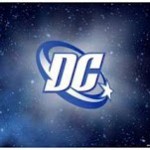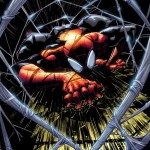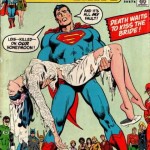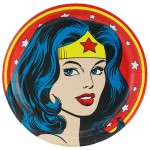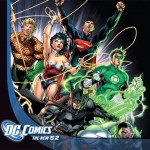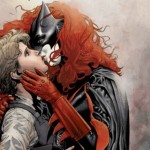 It’s been two years since the launch of the New 52, so it’s time to look at the state of DC comics again. Last year at this time, I took a look at the individual titles that make up the new 52 and how I thought they were doing. I cannot do that this year; two months ago I stopped collecting all DC titles.
It’s been two years since the launch of the New 52, so it’s time to look at the state of DC comics again. Last year at this time, I took a look at the individual titles that make up the new 52 and how I thought they were doing. I cannot do that this year; two months ago I stopped collecting all DC titles.
If you have been following me for a while, then you know how much of a DC comics fan I am. If you are new, here I suggest clicking on the DC comics tag at the bottom of the column. But if you have been following me, you also know I have been very critical about the direction DC comics has been going. Over several months I started slowly dropping titles, as I had decided I should not be reading books I was not enjoying. Two months ago was where I hit the point of looking at what was going on at the company over all, and decided to vote with my wallet and drop them completely. I found that DC comics overall had just become a joyless place, where every book was being written like it was Batman, and the Batman titles were being written like they were a Lars Von Trier film.
And then this last week happened.
I find it interesting that everything hit critical mass at the 2 year point on the New 52. It all started on September 5th when J.H. Williams III and W. Haden Blackman, the writers and artist for Batwoman, were leaving the series with issue #26. Their reason for leaving was given as last minute editorial meddling on an already approved storyline. In this case, it was the marriage between Batwoman and her girlfriend Maggie Sawyer. With same-sex marriage being a major social issue, this got a lot of attention.
To be clear Williams and Blackman gave their reason for leaving as constant editorial interference, not specifically that there were not being allowed to follow through on the marriage.
Keep in mind that this has been a common complaint over the last two years. Talented creators leaving DC, for this reason, has become so common that the site Gutters and Panels created a timeline about it.
On September 7th at Baltimore Comic Con during a DC Nations panel, DC Comics Co-Publisher Dan Didio clarified the company’s position: Didio said that they have no problem with gay marriage; they just don’t want any of their heroes to be married, gay or otherwise. Didio went on to say that to be a superhero is to sacrifice your own happiness. In other words none of the heroes in the DC Universe can have a happy personal life, and that includes being married.
It was also announced that Mark Andreyko would take over as the new writer on Batwoman with issue #24. This means that Williams and Blackman will not be doing the last two issues of their run as they planned.
This led to one unnamed DC executive being asked “what about Aquaman and his wife Mera?” The executive clarified that Aquaman and Mera are King and Queen of Atlantis, but that they are not actually married. This came as a surprise to Aquaman’s current writer Geoff Johns.
While this was bad enough, DC had another problem come up at the same time. An artist talent search was announced. Basically, this contest involves drawing four panels of the character Harley Quinn, based on description’s from the writer of her new series, Jimmy Palmiotti. The problem arose from the description of the fourth panel:
Harley sitting naked in a bathtub with toasters, blow dryers, blenders, appliances all dangling above the bathtub and she has a cord that will release them all. We are watching the moment before the inevitable death. Her expression is one of “oh well, guess that’s it for me” and she has resigned herself to the moment that is going to happen.
People complained about the promotion of a “sexy suicide”. It was later clarified that the sequence in all four panels involved Harley breaking the fourth wall and discussing the absurd situations her writers put her in. Palmiotti eventually took the blame for the uproar, for not providing context to the scene. However even with context there are a lot of people upset simply by the imagery.
Both situations were bad enough, but DC found a way to make them worse. In both cases, DC co-publishers Dan Didio and Jim Lee took to twitter to defend their positions.
If you follow this link, you will find a listing of how Didio defended the prevention of Batwoman’s marriage and spun the departure of Williams and Blackman as a good thing.
And if you follow this link, you can see the very long twitter thread that Lee made explaining context in sequential art.
After reading both threads there was one conclusion I was able to come to: neither Didio nor Lee have much respect for their fans. Both took condescending tones on twitter, and dismissed fan concerns out of hand.
That last really doesn’t surprise me much. Both have displayed this behavior before, especially at conventions. It can also be seen in how they have been handling the overall promotion of the DC comics universe for a while now. Between the overall presentation of the new 52, or particular storylines such as the Superman/Wonder Woman romance, there has been the underlying message. Unfortunately that message is “this is what you are going to like, and we are going to keep hammering you with it until you accept this.”
It should go without saying that the fan reaction has not been positive, but again this is nothing new. There is now a website called Has DC done something stupid today. If you go to the link, you will see it has a counter for how many days it has been since they posted something fitting their criteria of something stupid. The record so far is eight days.
Due to his position at DC Comics, and his public visibility, Dan Didio has been the focal point in all the online discussions related to DC’s direction. For example, fans on twitter have created a hashtag #firedidio as a place to vent their frustration over all of the above issues as well as the handling of the company overall.
But not every bit of coverage has been against DC. Rich Johnson, of Bleeding Cool, wrote an editorial in response to #firedidio defending the DC co-publisher and citing the good things he has done for the industry.
So where does all of this leave us?
As I made clear at the beginning, I personally am not happy with the direction DC comics is going in. From the beginning, I feel that the New 52 was a hastily thrown together project. Rather than take the time to put together a cohesive reboot of the DC Universe, a rush job was done without any clear vision, and the result has been a muddled mess.
On top of that, you have had the editorial turf wars and the non-stop executive meddling in the process. If there has been a consistent narrative that has emerged, it is that DC comics no longer values its creators. Writers and artists, even well respected ones, are now considered disposable as the editors ride roughshod over them.
Does this mean that the ire directed at Dan Didio is deserved? I think the answer is yes and no.
From the outside, the problems appear to be on a corporate culture level at this stage. This means it comes from the top down. In this case, we have four people that need to be held accountable. DC Entertainment President Diane Nelson, DC Comics co-publishers Dan Didio and Jim Lee, and DC Comics Editor-in-Chief Bob Harras.
There could be an argument made that Chief Creative Office Geoff Johns should be included here, as well, but his duties in that role involve DC properties outside of comics so, in this regard, he is a writer who happens to have a great deal of influence.
Lee is in a similar boat, in that although he is co-publisher he appears to spend a lot of his time on outside branding and lives on the west coast, so is not often in DC Comics New York office.
Bob Harras, on the other hand, is a flash point for a lot of fan ire. As Editor-in-Chief, he has certainly been involved in much of the interference that creators have complained about. Also, when he held the same position at Marvel, the company was on the edge of bankruptcy. He also gave the green light to the Spider-Man Clone Saga, considered one of the worst storylines in comic history. Many fans on the #firedidio hashtag want him gone just as badly.
And, of course, we have Dan Didio himself. Unlike his co-publisher, Lee, Didio is very much involved in the day to day running of DC Comics, and is basically the person setting the pace. He is also a very public figure at conventions and on social media. It should come as no surprise that he would be the focus of fan ire and, given his position and statements he has made, there is a lot to reinforce that.
On the other hand, from a strictly business perspective. he has gotten the job done. DC Comics owner, Warner Bros, is concerned with two things – profits, and being able to leverage the DC brands into other media, for additional profit. From this perspective, Didio has done a fair enough job that there is nothing directly warranting his removal. The PR faux pas are not enough to get their attention.
Of all the people in charge, Diane Nelson is arguably in the toughest position. As president of DC Entertainment, the buck stops with her. Also, if Didio, or any of the others were to be fired, she would be the one doing the firing. But, as I have written before, she is not a comic publisher; she was originally a movie brand manager. She looks to Didio and Lee to handle the publishing side of the business, and has always presented a united front with them. Unless something drastic happens, she is not going to do anything to them.
So what can we, the fans, do? Two things:
A lot of people have said that the #firedido hashtag is useless, as it will not actually get him fired. They are of course correct about it not getting him fired, but not that it is useless. It gives the fans a place to vent their frustrations, and is a public sign that a lot of people are not happy with the direction DC Comics is going. It also lets fans that are feeling that frustration know that they are not alone. Of course the same is true for the fans who are happy with DC Comics, and that want to defend them.
The other thing is what I and others like me have done: vote with your wallet. A twitter hashtag may not make WB pay attention, but dropping sales certainly will. If you are not happy with a title, but are still buying the book, then you are telling them to keep doing what they are doing since you are willing to pay for it. Remember that the bottom line is the almighty dollar.
And if both are happening at once, then we may see something happen. If sales start dropping and fans are complaining loudly about something, and citing it as the reason they have stopped buying, then you will see changes happen.
Do I expect that anytime soon? No, but if DC Comics does not do something to halt the drain of the talented creators it will eventually.
Until then, I will wait for the day when I can return to reading the stories about my childhood heroes.

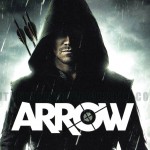
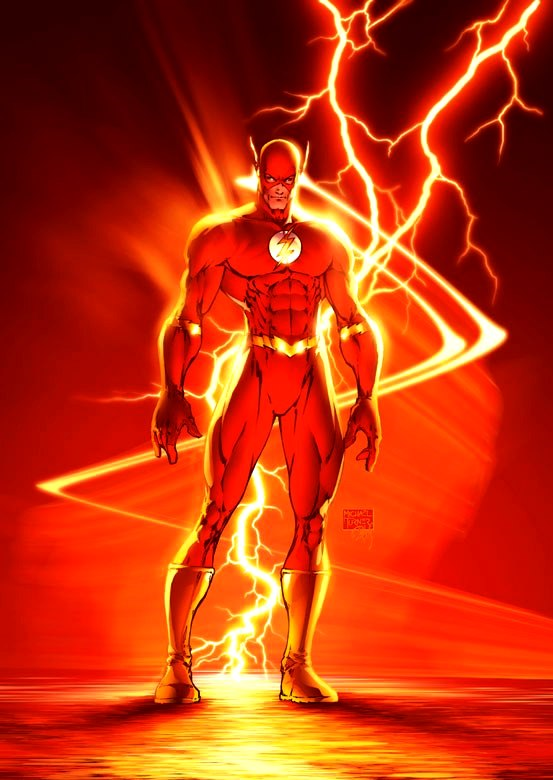 n we are being bombarded by news about the nonsense surrounding the DC Comics “New 52”, both storyline-wise and the many issues with the creative staff, and dropping sales. I, like many comic fans, find myself musing about how it could be fixed. If you think the New 52 is great and does not need fixing, you might want to skip this, you aren’t going to like it very much.
n we are being bombarded by news about the nonsense surrounding the DC Comics “New 52”, both storyline-wise and the many issues with the creative staff, and dropping sales. I, like many comic fans, find myself musing about how it could be fixed. If you think the New 52 is great and does not need fixing, you might want to skip this, you aren’t going to like it very much.